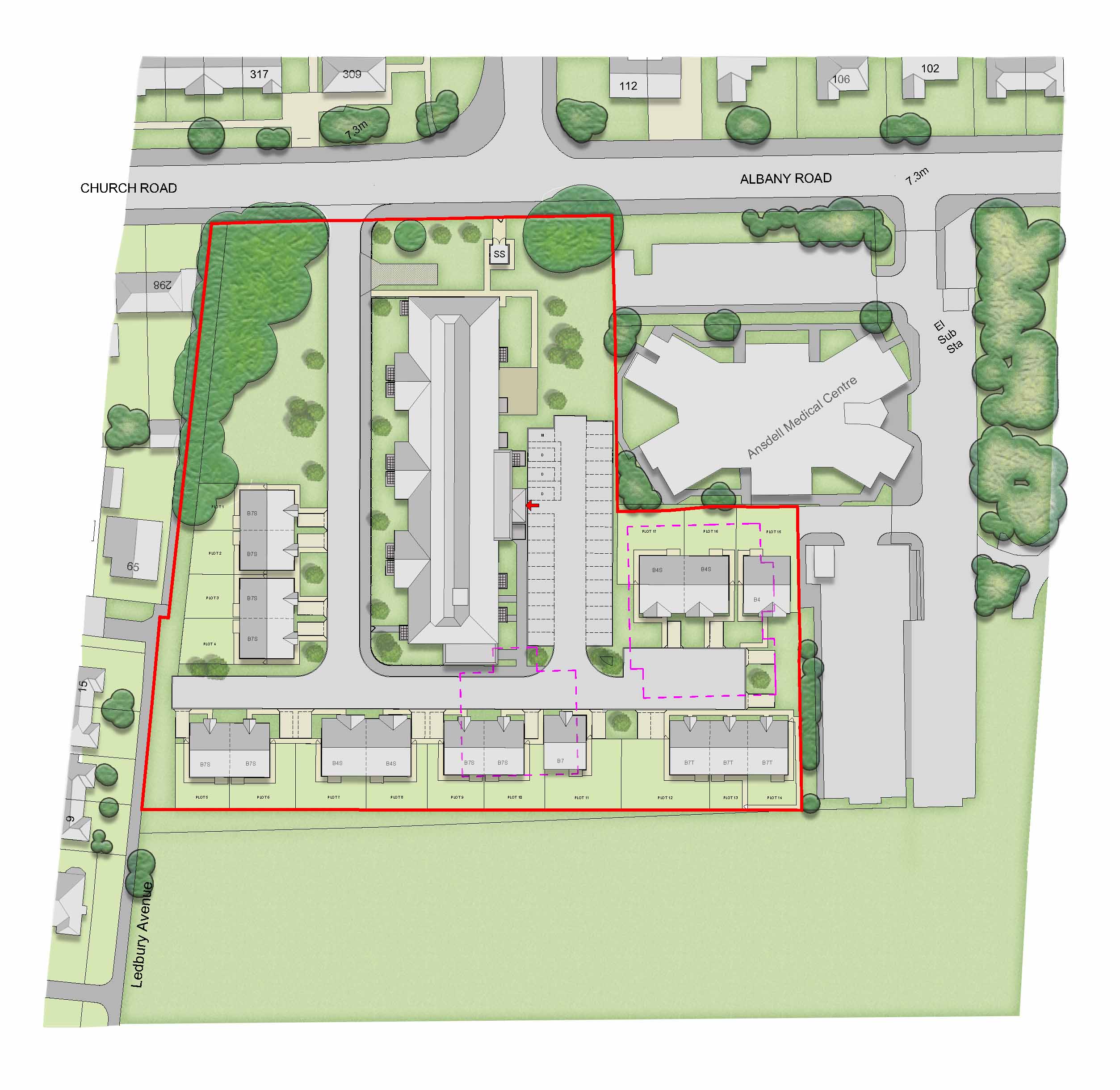Exciting New Retirement Proposal
Thank you for taking the time to visit our consultation website. We submitted a planning application to redevelop land at the former Lytham Sixth Form College, Ansdell and are bringing forward an exciting proposal for a new specialist retirement community.
Public Exhibition
We held a public exhibition on Tuesday 23rd January.
The exhibition boards that were on display at our event can be viewed here.
PROPOSALS FOR THE LAND AT THE FORMER LYTHAM SIXTH FORM COLLEGE, ANSDELL
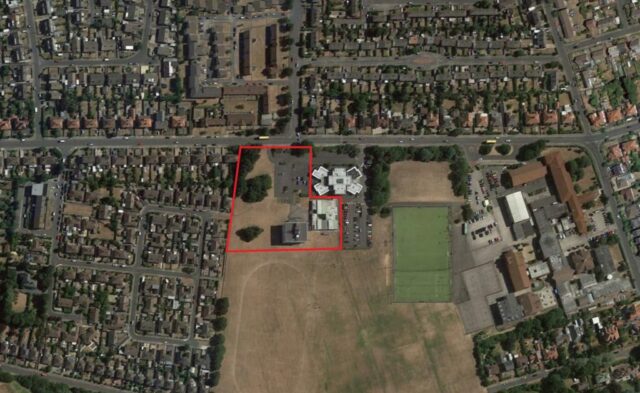
Project Status
Thank you for providing feedback on our plans. Your thoughts and suggestions have helped to inform the planning application we have now submitted to Fylde Council. The application has now been validated under the planning reference: 24/0106
Our Vision
Our vision involves developing this site with specialist Retirement Living accommodation comprising of apartments with indoor communal facilities, high quality landscaped gardens and on-site car parking, complementing the area. Additionally, bungalows will form a key element of the plans providing single-storey, accessible living to cater to diverse retiree preferences.
There is a real need for this type of housing in Ansdell, with an ageing population and limited specialist accommodation for local older people to downsize to. Our proposals would help to address this issue, allowing local older people the opportunity to move into a more suitable home, while staying close to friends and family in Ansdell.
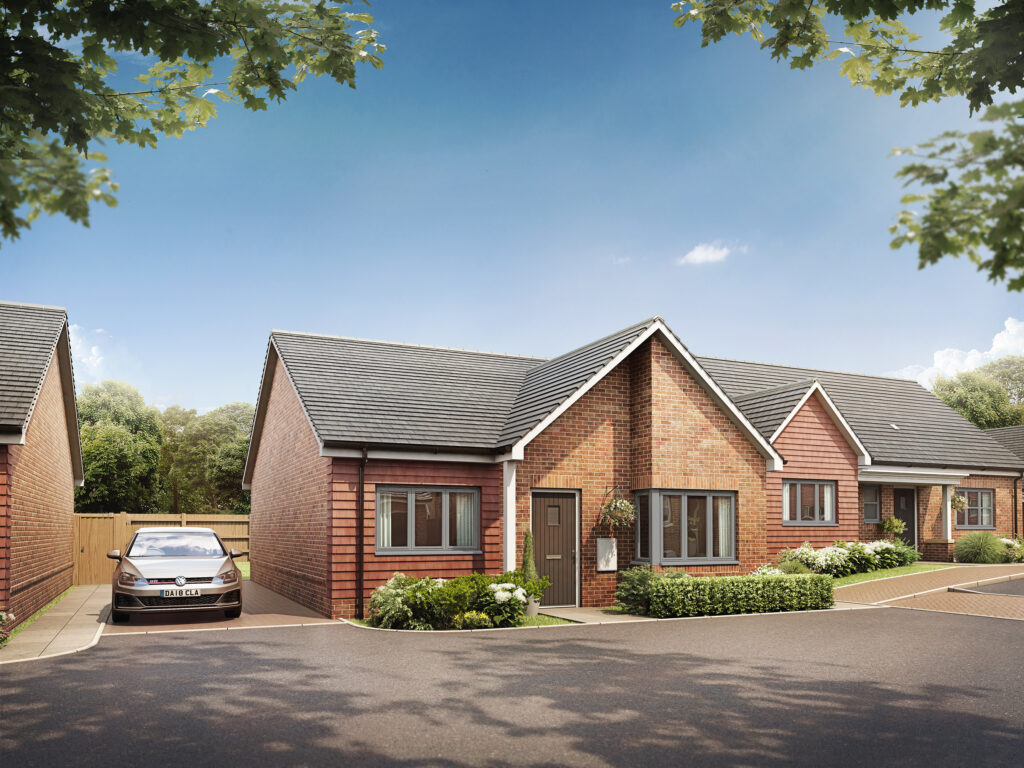

Our Proposals
MCK Architects has been appointed by McCarthy Stone to undertake the architectural design relating to the proposed Retirement Living development on the land at the former Lytham Sixth Form College, Ansdell.
The development seeks to provide:
- A high-quality Retirement Living development of 42 apartments and 17 bungalows for private sale and part-rent part-buy.
- Level access to and from the apartment building, across all floors and with lift access to all levels.
- Regeneration of a vacant brownfield site
- Thoughtful design of a new building and bungalows with associated landscape proposals to respond to the local character of Ansdell.
- Appropriate scale and massing for the site which relates positively to its context and neighbouring properties, as well as providing positive enclosure and frontage to the nearby roads and open spaces.
- Tailored shared facilities within the Retirement Living apartment building, including a communal lounge and a guest suite for when friends and family come to stay.
- On site parking with a provision of 31 spaces for the apartments as well as two spaces per bungalow.
- Attractive landscaped outdoor spaces, to include a landscaped parking area together with a communal terrace and garden as well as new tree and shrub planting to encourage biodiversity.
The Site
The site is located at the former Lytham Sixth Form College off Church Road / Albany Road, Ansdell.
McCarthy Stone believes the site is in a suitable and sustainable location to not only provide much-needed older persons accommodation for people in later life in Ansdell, but to also provide residents with a comfortable and good standard of living.
The proposed scheme would transform an underutilised brownfield site into high-quality specialist retirement accommodation, helping to regenerate this area of Ansdell. By making use of this site, it helps minimise the need for development on greenfield areas, promoting a more sustainable approach to meeting housing needs.
Local Need
There is a significant need for this type of development both nationally and locally. National Planning Guidance states that there is a critical need for older persons housing, and it is important that communities address the current and future needs of their residents.
The Fylde Coast Strategic Housing Market Assessment highlights that the older person population across the Fylde Coast is forecast to significantly grow in the period to 2030 with the percentage of older persons in Fylde set to increase by 41%. The SHMA further states that 52% of households aged over 65 are under-occupying their property and as such there is a need to ‘free up’ existing family housing by facilitating the availability of suitable, accessible dwellings that align with the evolving aspirations of the expanding older demographic. This proposal will help meet this need and ensure adequate choice in the market for the growing ageing population in Fylde.
Benefits
 Typically, most residents moving to a McCarthy Stone development move within a 5-mile radius of the development. Older people downsizing into this McCarthy Stone community, would release family-sized and starter homes back onto the local market. This residential shift would allow younger people and families the opportunity to move into their ideal home, while relieving pressure on developing local greenfield sites.
Typically, most residents moving to a McCarthy Stone development move within a 5-mile radius of the development. Older people downsizing into this McCarthy Stone community, would release family-sized and starter homes back onto the local market. This residential shift would allow younger people and families the opportunity to move into their ideal home, while relieving pressure on developing local greenfield sites. With 59 homes proposed for the site, residents of this development would be expected to spend money in local shops and businesses. Therefore, this new community would provide a vital boost to businesses in Ansdell, helping to support local retail jobs and keep shops open.
With 59 homes proposed for the site, residents of this development would be expected to spend money in local shops and businesses. Therefore, this new community would provide a vital boost to businesses in Ansdell, helping to support local retail jobs and keep shops open. Each person living in a McCarthy Stone specialist retirement community enjoys a reduced risk of health challenges, including dementia and slips & trips. This reduced health risk creates savings to the local social care service and the NHS of almost £3,500 per year.
Each person living in a McCarthy Stone specialist retirement community enjoys a reduced risk of health challenges, including dementia and slips & trips. This reduced health risk creates savings to the local social care service and the NHS of almost £3,500 per year.

Retirement Living
Our vision involves developing the site to provide a new Retirement Living community, with indoor communal facilities, high quality landscaped gardens and on-site car parking,
These schemes are exclusively offered to those aged over 60 and offer an array of carefully aimed benefits. For example, tailored shared facilities within the Retirement Living development, including a communal lounge and a hotel style guest suite for when friends and family come to stay.
The improved health and wellbeing of residents living in a McCarthy Stone home has a knock-on effect, saving the NHS and social care system money. Independent research shows that each resident living in a McCarthy Stone scheme saves the NHS and social care system approximately £3,500 per year, compared to those of a similar age living in mainstream housing.
The Benefits of Retirement Communities
It has been found that in the UK there are around 3.8 million individuals over the age of 65 who live alone, many of whom do not live close to family and friends or have easy access to local facilities from their current residence. These factors increase the risk of social isolation, which can lead to loneliness and depression in older age, and in turn more significant health issues such as dementia and chronic illness.
Creating supportive and sociable retirement communities is at the heart of our developments through our shared facilities and support services. A ready-made supportive community is available for customers to access, whilst retaining their independence and involvement in the wider local area, as they choose.
Over the past few years, we have produced a number of reports which examine the impact that retirement communities can have on residents, the economy and society-at-large. These reports are available to read and can be found at the menu on the left.
 Average health and social care saving of £267,000, per year for this development
Average health and social care saving of £267,000, per year for this development The average 80-year-old feels a decade younger after moving in
The average 80-year-old feels a decade younger after moving in A potential saving of £2.1billion to the state every year in NHS and social services costs
A potential saving of £2.1billion to the state every year in NHS and social services costs Our customers are around half as likely to have falls than they would have in their previous homes
Our customers are around half as likely to have falls than they would have in their previous homes Those in specialist retirement housing are half as likely to be lonely, making them significantly less likely to develop dementia
Those in specialist retirement housing are half as likely to be lonely, making them significantly less likely to develop dementia Approximately £721,000 of spending each year, with more that 50% of this spent in the local high street, providing an important boost to the local economy
Approximately £721,000 of spending each year, with more that 50% of this spent in the local high street, providing an important boost to the local economy Most McCarthy Stone customers move from within a 4-mile radius, releasing housing back into the market for families and first-time-buyers
Most McCarthy Stone customers move from within a 4-mile radius, releasing housing back into the market for families and first-time-buyers A McCarthy Stone development in Ansdell consisting of 59 homes would free up 118 family or starter homes further down the housing chain
A McCarthy Stone development in Ansdell consisting of 59 homes would free up 118 family or starter homes further down the housing chain The creation of up to 91 new and permanent jobs through construction, management and repairs, high street jobs and within the developments
The creation of up to 91 new and permanent jobs through construction, management and repairs, high street jobs and within the developments
Economic Benefits – supporting the local high streets
Recent research by WPI Economics, commissioned by Homes for Later Living, examined the impact that retirement accommodation has on local town, village, and district centres. The research concludes that the development of retirement properties creates more economic value and more local jobs than any other type of residential development and that their development can be a vital tool in the economic recovery of high streets following the Covid-19 pandemic.
McCarthy Stone developments are typically located on or close to high streets, as is the case with the proposed development. This ensures that residents have easy access to local shops and services. Retirement properties have a positive impact on the local economy through the purchasing power of its residents, also known as the ‘grey pound’ effect.
There is an increased likelihood of older residents spending their money locally, as opposed to nationally or online. The research, undertaken by WPI Economics, states that, on average, 63% of residents’ annual expenditure is in local shops, a figure far higher than the average local spend by 80+ year olds in the general population.
Residents of a typical 45-unit retirement development generate £550,000 of spending per year, £347,000 of which goes to local shops, supporting retail jobs and keeping shops open within the community.
This spending by older people can help maintain local outlets from the newsagents and the butchers to the bakery, pub, and local cafe – in other words the shops and community spaces which make up the heart of local communities.
 The average retirement scheme delivers £13 million in an area over the lifetime of the development
The average retirement scheme delivers £13 million in an area over the lifetime of the development Residents of a 59-unit McCarthy Stone scheme would spend around £721,000 in the local economy each year
Residents of a 59-unit McCarthy Stone scheme would spend around £721,000 in the local economy each year £454,000 of this spending is on the local high street
£454,000 of this spending is on the local high street Reduced running costs by around £1,200 per year, as a result of lower heating water and utility bills
Reduced running costs by around £1,200 per year, as a result of lower heating water and utility bills An average of 85 jobs created during construction
An average of 85 jobs created during construction An average of 6 jobs created on the high street through additional local spending
An average of 6 jobs created on the high street through additional local spending
Health and Wellbeing – relieving pressure on the NHS
Our retirement communities help to bridge the gap between family housing and care homes. It is well known that the pressures on health and social care are immense and are likely to worsen, as the population ages. Purpose-built housing can help reduce the risk of health challenges in older age.
Retirees of today expect far more choice and greater quality. Specialist housing schemes for later living respond to this by offering varying levels of support and social interaction for those who want to stay safe and keep their independence in later life. All schemes offer residents the opportunity to live independently in their own space, usually a one or two-bedroomed apartment or bungalow.
By maximising independence and increasing social interaction, all of these housing environments can improve the well-being and health of older people and so enhance their overall quality of life. Our research has shown that people living in all forms of housing for older people have significantly greater well-being than those living in other types of accommodation.
In addition to improved well-being, specialist retirement accommodation has the potential to deliver huge fiscal savings to the NHS and local authorities. This independent report has calculated that the average person living in specialist housing for older people saves the NHS and social services £3,490 per year. Assuming average household sizes of around 1.33 in homes for later living, building 30,000 homes for later living every year could therefore generate fiscal savings to central government and local authorities of at least £1.4bn a year within a decade.
 Savings to the NHS and social care system of approximately £3,500 per person per year
Savings to the NHS and social care system of approximately £3,500 per person per year Reduced hospital time, as purpose-built housing for older people can better cater for an older person during recovery
Reduced hospital time, as purpose-built housing for older people can better cater for an older person during recovery Half as likely to have falls resulting in fractures, injuries and costly inpatient bed stays
Half as likely to have falls resulting in fractures, injuries and costly inpatient bed stays Half as likely to be lonely, making them significantly less likely to develop dementia
Half as likely to be lonely, making them significantly less likely to develop dementia Residents feel 10 years younger when moving into one of our retirement communities
Residents feel 10 years younger when moving into one of our retirement communities Increased reaction time to strokes to ensure sufferers receive urgent medical attention, which is crucial to surviving and making a full or near-full recovery
Increased reaction time to strokes to ensure sufferers receive urgent medical attention, which is crucial to surviving and making a full or near-full recovery Purpose-built to address the needs of older age, with step-free and wheelchair access throughout our buildings to reduce trips and falls
Purpose-built to address the needs of older age, with step-free and wheelchair access throughout our buildings to reduce trips and falls
Housing Market – contributing to local housing needs
A high percentage of over-65s own their own home. Enabling them to move makes a significant contribution to unlocking the housing market, freeing up under-occupied accommodation and much needed local family housing.
Developing specialist accommodation for older people would not just benefit the older generation and the NHS, but it would also help young families looking for a family-sized home with a garden, perhaps near a school or a park. Through the chain effect running through the housing market, specialist retirement accommodation, such as being proposed, would address the prime concern of the younger generation by paving the way for the release of more first-time buyer homes back onto the market.
Our analysis shows that encouraging the building of more retirement properties will not only give our ageing population more flexibility to move when they wish, but that the knock-on impact of freeing up family sized homes will also help younger generations, whether they are looking to upsize or to purchase their first property.
It is clear that building more specialist accommodation for older people can simultaneously help people at the top and bottom of the housing ladder.
 Most of McCarthy Stone’s customers move from within a 5-mile radius and free-up large family-sized houses
Most of McCarthy Stone’s customers move from within a 5-mile radius and free-up large family-sized houses Around 3 million people in the UK over 65 would like to downsize
Around 3 million people in the UK over 65 would like to downsize Each move to a retirement property prompts a further two to three moves further down the housing chain
Each move to a retirement property prompts a further two to three moves further down the housing chain Every 2 in 3 moves result in a first-time buyer purchasing their first home
Every 2 in 3 moves result in a first-time buyer purchasing their first home 90% of retirement developments are brownfield sites, reducing the demand for greenfield development
90% of retirement developments are brownfield sites, reducing the demand for greenfield development
Sustainability – reducing housing market carbon emissions
Specialist retirement housing can support the UK in its efforts to achieve net zero carbon emissions and improve local biodiversity.
McCarthy Stone pride ourselves in our fabric-first approach to developments, designing and building energy efficient properties, effectively insulated, and with reduced carbon emissions in relation to standard new build homes. McCarthy Stone properties are 100% electric, unlike standard homes which are usually a mix of gas and electricity. A combination of this energy efficient design and the clean energy used to heat the homes, result in McCarthy Stone properties far exceeding the energy efficiency of typical new build homes.
In addition to this, if there is insufficient specialist retirement accommodation, older people are likely to remain in their house for longer, resulting in a higher demand for new builds homes at all levels of the property ladder. Because new build houses have higher emissions than new build apartments, this in turn is likely to mean higher emissions from housing overall.
As the UK kickstarts its environmental reclamation through legislation in the Environment Act, McCarthy Stone has been going over-and-above to promote an increase in biodiversity at its sites. McCarthy Stone’s apartments are significantly more likely than other new homes to be developed on brownfield land rather than greenfield land. With 90% of McCarthy Stone developments located on brownfield land, this work often involves cleaning up contaminated land that poses a risk to local wildlife.
Looking at housing density, the average McCarthy Stone development uses less land for car parking and building than typical new builds, leaving more room for open green space, including gardens and landscaping. The latter either protects or enhances biodiversity, whereas the former is generally most damaging.
As the Government plots the path to achieving net zero by 2050, McCarthy Stone is pleased to be able to support the housing market in its efforts to improve sustainability and biodiversity.
 McCarthy Stone properties are powered by electricity, not gas, delivering environmental benefits, and now an important economic benefit to residents
McCarthy Stone properties are powered by electricity, not gas, delivering environmental benefits, and now an important economic benefit to residents New properties are built with a ‘fabric first’ approach, ensuring high-quality insulation and a greater level of energy efficiency
New properties are built with a ‘fabric first’ approach, ensuring high-quality insulation and a greater level of energy efficiency Downsizers moving into purpose-built housing for older people free up family-sized homes, reducing the pressure to build this more carbon-intensive housing stock
Downsizers moving into purpose-built housing for older people free up family-sized homes, reducing the pressure to build this more carbon-intensive housing stock McCarthy Stone properties are well-located on central, town centre sites, resulting in a carbon saving of around 0.35 tonnes per year as a result of reduced driving
McCarthy Stone properties are well-located on central, town centre sites, resulting in a carbon saving of around 0.35 tonnes per year as a result of reduced driving More than 90 per cent of McCarthy Stone schemes are on brownfield sites
More than 90 per cent of McCarthy Stone schemes are on brownfield sites McCarthy Stone developments typically make more efficient use of land than the majority of other housing schemes
McCarthy Stone developments typically make more efficient use of land than the majority of other housing schemes Attractive gardens and landscaping are provided, making a vital contribution to wellbeing and delivering a biodiversity net gain
Attractive gardens and landscaping are provided, making a vital contribution to wellbeing and delivering a biodiversity net gain
Our Approach to Design
In order to ensure the proposal displays the best design possible, care is taken to investigate the architectural landscape of the area.
Before we begin designing any proposal, our team of architects spend time researching the architecture and character of the local area to ensure a sensitive design that is in keeping with its surroundings.
We are committed to ensuring our development is sustainable and will seek to utilise locally sourced and A-rated materials, wherever possible.
We have carefully considered our design, to breathe life into a disused brownfield site. Our proposals present an exciting opportunity to bring forward high-quality, low maintenance homes in a vibrant town. We believe that these will provide genuine choice for older people so they can continue to live locally in a home that meets their needs and aspirations in their later years.
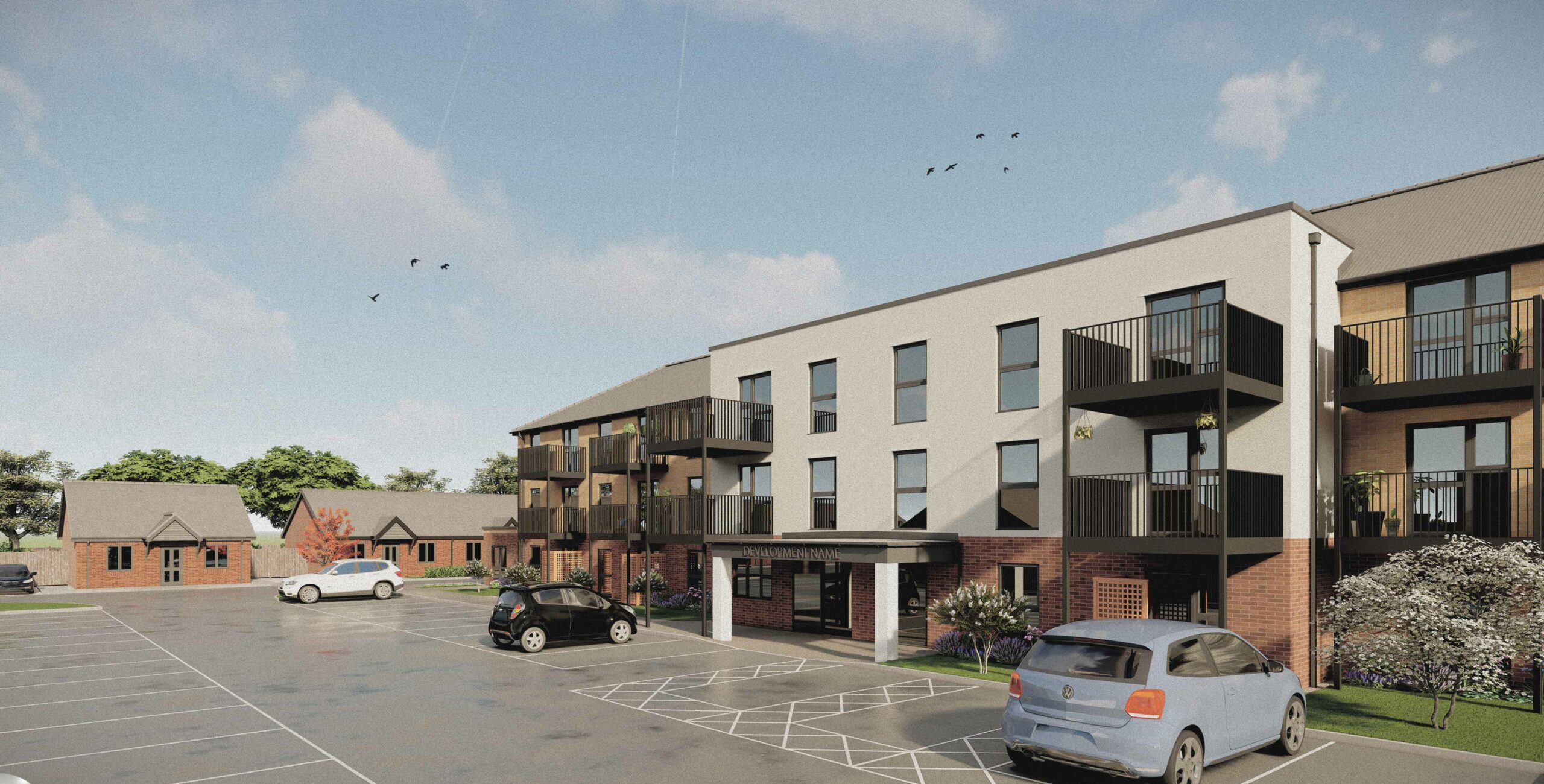
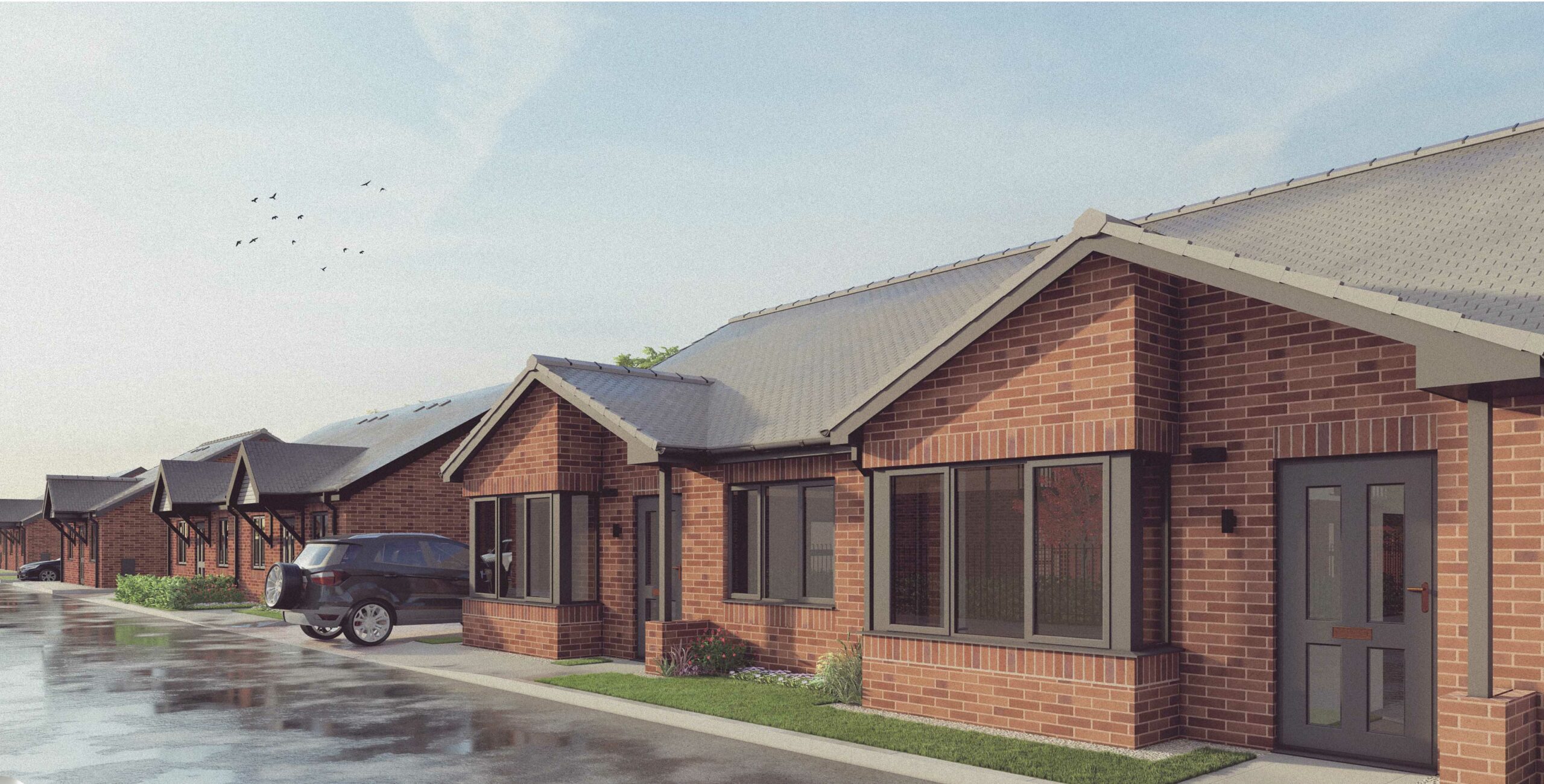
Transport
The site will be accessible for vehicles through the existing entrance on Church Road / Albany Road. The entrance design prioritises a level approach, ensuring easy access from the car park areas through dropped kerbs and level thresholds. This thoughtful design facilitates unimpeded movement, ensuring seamless accessibility for all.
The proposal includes a total of 65 on-site car parking spaces for residents, staff and visitors with 34 spaces overall for the retirement block and further two spaces allocated for each bungalow. The car parking layout has been designed so that new planting and landscaping will mitigate the visual impact of parked vehicles for nearby residents.
The level of parking provision takes account of the lower traffic generation and car ownership associated with age-restricted retirement development.

Outdoor Spaces
We seek to ensure that all our developments have high-quality outside space for our residents to enjoy.
Our proposals for Ansdell will offer excellent outdoor spaces, including a landscaped parking area together with a communal terrace and garden.
The landscape proposals aim to create an attractive environment with year-round interest to complement the proposal and offer well designed communal space and gardens to the future residents. Raised planters will also be provided to give residents the opportunity to undertake gardening projects of their own.
The biodiversity on site is increased through extensive planting, with proposed trees and other seasonal and native foliage. This provides not only visual interest and variation within these amenity spaces, but also re-provides and enhances potential habitats on site.
Our developments are designed to blend in with their surroundings. We recognise that high quality gardens and landscaping turn a good development into a great one, and we are pleased that many of our schemes have won awards for their outside space.
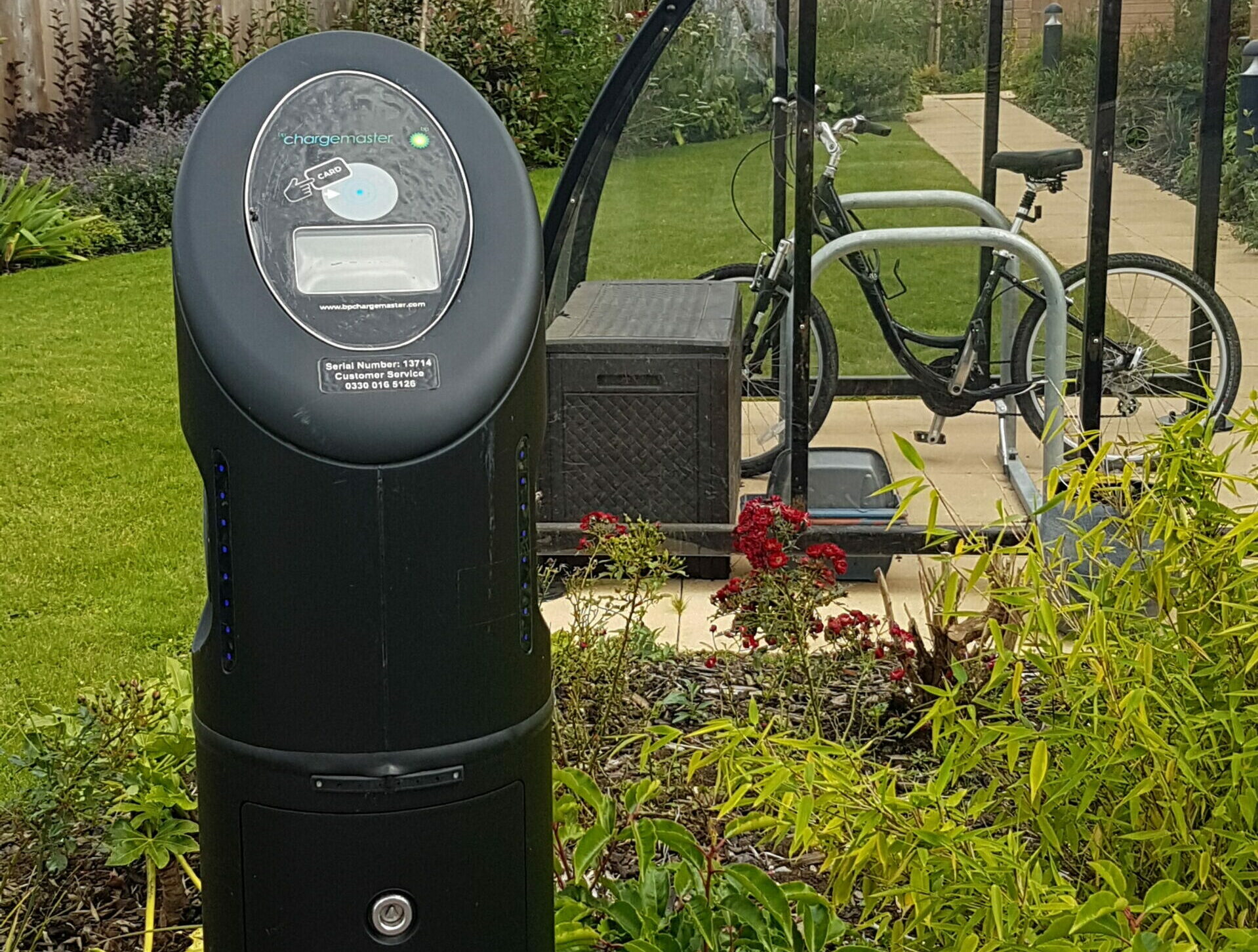

Our Purpose
Since building our first development in 1977, we have become the UK’s leading developer and manager of retirement communities. We have sold over 58,000 properties across 1,300 developments. We are focused on developing beautiful, sustainable and more affordable places to live, with flexible services and choice of ownership options at the core of our developments, designed around the needs of our customers and their families.
We believe that retirement living is so much more than simply deciding to move into a new home that’s better suited to our customers’ needs. It’s also an opportunity for them to embrace a new way of life, to have the freedom to live a lifestyle with more choices and more time to do the things they enjoy.
Our considered approach means we are the only home builder to have gained the top rating in the Home Builders’ Federation’s Customer Satisfaction Survey every year since it was introduced in 2005. We are committed to ensuring that older people can continue to enjoy their independence safe in the knowledge that help and support is never far away.
As part of our commitment to local communities, we work closely with site neighbours and stakeholders to help ensure we prepare the best possible plans before we submit a planning application for a new scheme. This consultation website is part of our activity to engage local people in the design of our schemes, and we hope you find them helpful and informative.
Retirement Living
Retirement Living creates safe and secure environments for our homeowners to continue to live an active, independent life with oversight care provided by our management company, and via our emergency call system. Homeowners have their own front doors and privacy just as they did in their previous homes and they are free to join in community activities within the development or to pursue their own interests as they please.
Apartments can be occupied by people aged 60 or over and are provided for outright sale, as well as shared ownership, rent and part rent-part buy. The average age of residents upon purchase is 79, and the majority of homeowners moving into our developments already live in the local area.
All the independence, None of the worry
Having to maintain a large property can be a burden, especially for someone living on their own. That’s why every Retirement Living development has its own fully-trained House Manager – someone to manage the day-to-day running of the development and to be on hand during office hours. Our House Managers act as a ‘friendly neighbour’ and helps to arrange many of the social activities that take place in our developments.
We are experts in the experience of growing older, and constantly adapt our offering to the changing needs of our homeowners, with flexible on-site services, including electric car clubs in some of our developments. Customers also have a camera entry system linked to the TV in their apartment, and the peace of mind of having our 24-hour emergency call service available at the push of a button. Estate management and support services are provided by us – no third party is involved.
Friendship, Fun and Support
Later life is filled with possibility, and we believe there is vitality in togetherness that gives people purpose and a sense of fulfilment. Along with the benefits of independent living within their own apartments, homeowners are able to enjoy activities in the shared spaces within the development. These include a shared lounge and a guest suite for when friends and family come to stay. All of our developments also include beautifully landscaped outside spaces which enhance both the building and the local neighbourhood, as well as providing a social area for homeowners to come together which is, importantly, accessible to older people.
The shared spaces provided with our retirement communities help to combat loneliness in later life more effectively. A readymade supportive community is available for homeowners to access, whilst retaining their independence and involvement in the wider local area, as they choose. We make this a priority within our developments, ensuring that a range of social activities, events, organised outings and opportunities to make new friends are available to all its homeowners.
LET US KNOW YOUR VIEWS
The project team hope that you found this consultation informative.
Thank you for your feedback. We have now submitted a planning application to Fylde Council.
Thank you for your feedback. This consultation is now closed.

